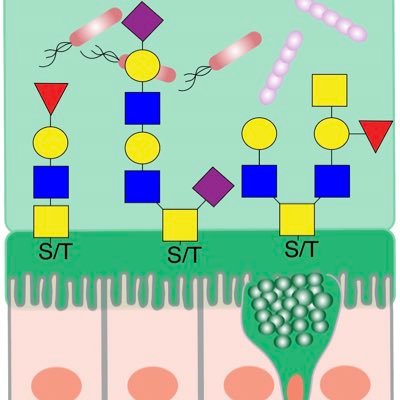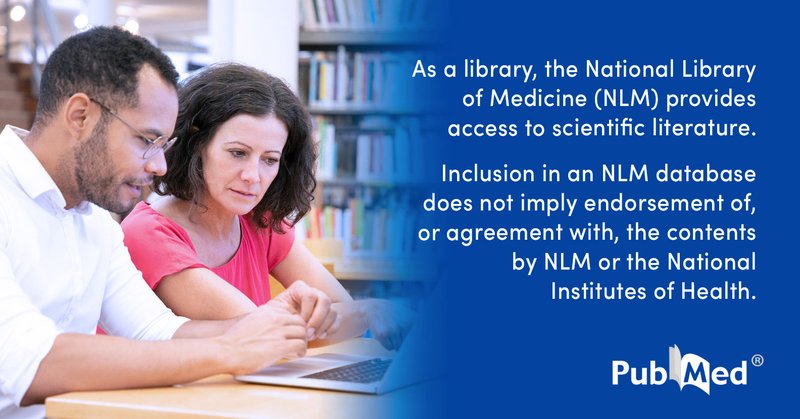
MucinGlycoLab_UBC
@BergstromLabUBC
Followers
212
Following
85
Media
24
Statuses
73
The Mucin Glycobiology Lab (aka Bergstrom lab), focuses on interface biology—where host & microbe meet, with mucins and their glycans at the centre of it all!
Kelowna, British Columbia
Joined January 2023
Fantastic new study from the Vereecke Lab!.
🎉 Super excited to announce that our study "Colibactin-driven colon cancer requires adhesin-mediated epithelial binding" is now published in Nature! Huge congratulations to first authors @MaudeJans and @magdalenakolata for their fantastic work! 1/6🧵🎉.
1
0
1
#ThrowbackThursdayScience. 1992. Insightful work from influential pioneers in mucus biology, Anthony P. Corfield and Lansing C. Hoskins, revealing the tremendous digestive capabilities of the microbiota and its relationship to mucus. We know now that mucus--via it's O-glycan
0
2
4
Fantastic innovative work from the Malaker Lab!.
🚨Check out our new #glycotime preprint: Glycosite Mapping and in situ Imaging of MUC2 Glycopeptides via On-slide Digestion with Mucinase StcE! 🥳@SC_Lowery et al used MALDI IMS and intact glycoproteomics to understand spatial distribution of mucins: 🧵👇
1
0
8
#ThrowbackThursdayScience 2002. The lab of Richard Cummings identifies Cosmc, a crucial chaperone required by mammalian core 1 beta 1,3 galactosyltransferase to synthesize core 1 and all complex O-glycans emanating from this structure (Ju & Cummings, PNAS, 2002). Not only that,
0
3
7
Unexpected antibiotic-mucus relationships reported from the Bel Lab with implications for IBD!.
🚨🚨I’m excited to present our lab’s new paper where we tried to provide a mechanistic explanation for the link between antibiotic use and risk of developing inflammatory bowel diseases (#IBD). A 🧵/1.
0
2
3
RT @MicroResRep: 👏Hot off the press! The biofunction of #Akkermansiamuciniphila in intestinal-related diseases .🤲Th….
0
7
0
Fascinating and important body of work from the Birchenough Lab @GobletCellGuy @MucinBiology studying goblet cell-mucus-microbiota relationships in neonatal mice! A must-read!.
🥳 New preprint from the lab now online! 🥳.Ever wondered when/how the colonic mucus barrier and other goblet cell-intrinsic defences develop? Look no further (for some answers at least. ) #neonatal #mucus #gobletcell #microbiome.
1
1
4
Another innovative study from the talented Allbritton Lab @UWBioE – this time using a novel in-vitro model of fecal-coated mucus to stimulate MUC2 and cytokine secretion from colonic epithelium! #mucin#UWBioE.
pubmed.ncbi.nlm.nih.gov
The relationship between the mechanical forces associated with bowel movement and colonic mucosal physiology is understudied. This is partly due to the limited availability of physiologically...
0
2
1
And last but NEVER least, my generous funders: Weston Family Foundation @WestonFamilyFdn for driving the majority of this work, as well as CCC @getgutsycanada, and Michael Smith Health Research BC @HlthResearchBC. Thank you for giving this ECR a chance! 11/11
0
0
2
My collaborators include the one and only Wesley Zandberg, Glycochemist extraordinaire who believed this vision right at the start. Also, my 3rd-floor research warriors @UBCgibsonlab, @Pakpourlab and Ghosh Lab and U. Calgary veterans Kris Chadee and Maitreyi Raman. 10/11.
1
0
1
Critically, we could do all this in healthy and IBD stools (#IBD), showing proof-of-principle applicability to healthy & diseased states, giving clues into the pathogenesis of these debilitating conditions. 6/11
1
0
3
We could analyze MUC2 every which way: by histology to probe thickness and mucus-microbe interactions and via lectins, by extraction, proteomics, and my favourite: functional glycomics to probe glycoprofiles, microbial growth, &metabolism! @glyconet_nce. But that’s not all…5/11
1
0
2
First, a bit of context: In 2020 we @OMRF@UBCOkanagan showed that the proximal colon in mice is a mucus factory that helps protect the distal colon from commensal invasion. How? 2/11.
1
0
1














